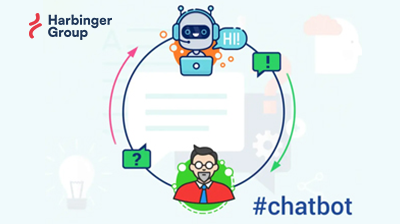
As per a report by DigitasLBi, 73% of the Americans stated that one bad experience and they would never use the chatbot again. This is how flawless the chatbot experience needs to be. And if you ask developers about the most challenging aspect of developing chatbots, most would agree that it is the ability of chatbot to anticipate questions and be ready with answers. Creating a knowledge base and rearranging the training content to train the bot is a time-consuming task. The challenge of curating content suitable for chatbot training has significantly hindered chatbot deployments.
Already available content is unusable in its original format
Content necessary for chatbot training is normally always available, but hardly in a format that chatbots could understand. This issue holds true, especially for information chatbots. There are lengthy documents explaining details about the system(s) and platform(s). For products, there are user manuals. The elaborate text is available across various HTML pages. Emails from the past have solutions for issues raised by the customer(s). However, one needs to curate this information in a form that chatbot training models can understand.
What solution is available currently?
Currently, developers resort to a manual process to create questions from existing content, which are then fed to a chatbot to train the model. Subject matter experts create this initial list of questions.
As per our experience, the average time spent on creating training data for small and simple documents ranging from 6-8 pages, is around 8-10 days. Typical examples of such documents are leave policy, benefits details, and product manuals. More complex content can take much longer to curate, sometimes up to a few months.
Challenges with the current approach
- Subject matter experts end up spending an enormous amount of time in articulating questions and answers from the available content.
- Content evolves continuously, and so should the training data. This demands repetitive cycles of updating the chatbot training content
- Outsourcing is not a practical option here, as it would require elaborate training of a third-party not conversant with the content and the chatbot workflow.
Harbinger Solution
At Harbinger we have developed an AI-assisted framework, with natural language processing ability, to automatically generate questions from the content. One just needs to upload the text to this framework, and it generates a list of logical questions. Subject matter experts, or business analysts, are expected to review, and possibly prune, the generated questions, which can then be fed to the training models. This approach can significantly reduce – by up to 60% to 70% – the time required to create training data.
An Example
Consider a case where an organization has built a chatbot for its leave management (PTO) system to handle employee queries. Now, this system already has the leave policy uploaded in it. If you take the conventional route to train the chatbot, then you would need to manually create a list of the most frequent questions asked by employees. With Harbinger’s AI assisted framework, a bulk of your work would be accomplished the moment you upload the leave policy document in the system. The framework would create a list of logical questions. This list can be reviewed and fed to a chatbot training model. The conventional method would take 8-10 days to create questions, and with Harbinger’s framework, the whole task could be accomplished in only a couple days.
Taking Pain out of Creating Chatbot Training Content
It is not the content, but the process of curating the content to make it suitable for training chatbots, that is the most critical and labor-intensive element of deploying chatbots. Harbinger’s AI-assisted and NLP powered framework automates this process, dramatically reducing the time it takes to train chatbots. This innovation will allow you to deploy chatbots quickly and keep them up to date with the changes in training material in almost real time.
We would like to hear from you about your thoughts on how Harbinger’s AI assisted question generating framework can power your chatbot training.






